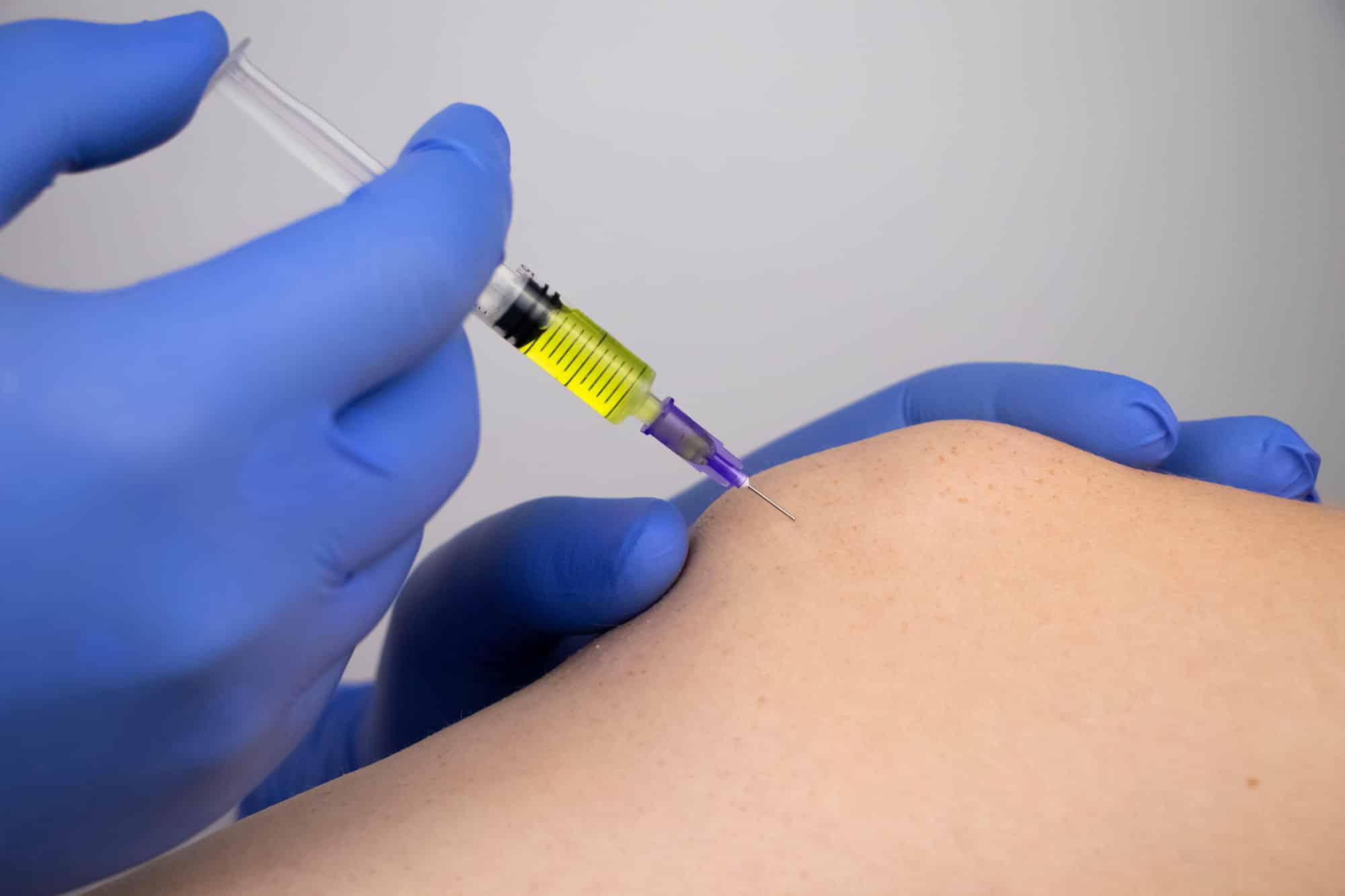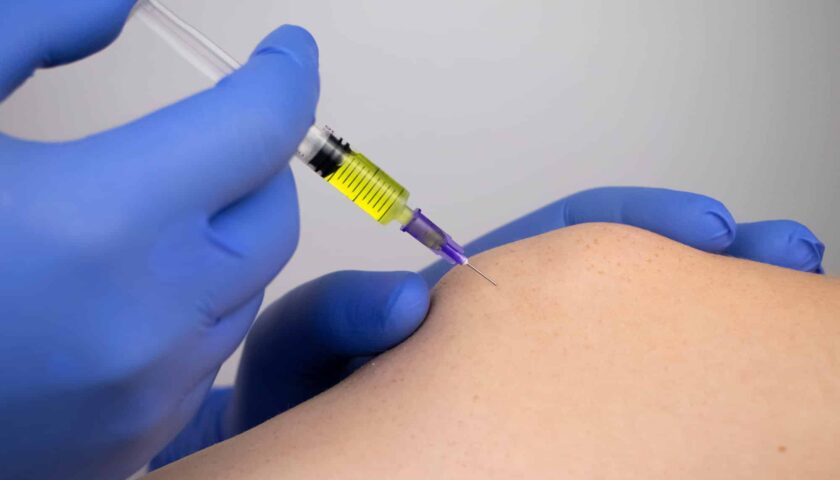
Osteoarthritis, a degenerative joint disease affecting millions worldwide, substantially burdens patients and healthcare systems. As medical professionals seek innovative approaches to enhance patient outcomes, rooster comb injection, also known as hyaluronic acid injection or viscosupplementation, emerges as a promising therapeutic option.
What Is a Rooster Comb Injection?
This type of injection involves the intra-articular delivery of hyaluronic acid (HA), a glycosaminoglycan naturally present in synovial fluid. HA plays a vital role in joint lubrication, shock absorption, and nutrient transport, contributing to articular cartilage’s overall health and function.
In osteoarthritis, the synovial fluid becomes less dense, leading to reduced joint lubrication and increased friction between joint surfaces. This results in cartilage wear and inflammation, causing pain and restricted joint mobility. Rooster comb injections aim to restore the viscoelastic properties of synovial fluid, alleviating pain and enhancing joint function.
HA derived from the combs of roosters is chosen for its molecular similarity to human synovial fluid, ensuring optimal compatibility and efficacy. The formulation is available in various viscosities, allowing tailored treatment plans based on the severity and location of joint involvement.
But despite its proven efficacy for many patients, not everyone responds favorably to rooster comb injection. Several factors may contribute to a lack of response, including advanced joint degeneration, concurrent inflammatory conditions, or incorrect diagnosis.
Non-responders may consider other treatment options, such as corticosteroid injections, physical therapy, or surgical interventions.
How Long Do Rooster Comb Injections Last?
The duration of the effects of a rooster comb injection can vary and depends on several factors, including the severity of osteoarthritis, the specific HA formulation used, the joint being treated, and the individual’s response to the treatment. Generally, the relief provided by a rooster comb injection may last up to six months or longer, but it is not a permanent solution for osteoarthritis.
When the effects of the initial injection diminish, patients may choose to undergo additional rooster comb injections as part of a maintenance plan to sustain pain relief and joint function.
Doctors must monitor each patient’s response to the treatment and adjust the treatment plan accordingly. Some patients may find that subsequent injections provide prolonged benefits, while others may not experience the same level of relief with each injection.
Indications and Patient Selection for Rooster Comb Injections
These injections are primarily indicated for patients with symptomatic osteoarthritis, particularly those with mild to moderate disease severity. It is most effective in weight-bearing joints, such as the knees and hips, although it can also be used in non-weight-bearing joints, like the shoulders.
The treatment is often considered for patients who have not achieved sufficient relief from analgesics and non-steroidal anti-inflammatory drugs (NSAIDs) or are intolerant to these medications due to adverse effects. It offers a viable alternative for patients unwilling or ineligible for surgical interventions such as joint replacement.
Before recommending the treatment, though, a thorough patient evaluation is a must to ensure appropriate treatment selection and optimize outcomes. The assessment process includes:
- A comprehensive review of the patient’s medical history, including previous joint injuries, surgeries, and other coexisting medical conditions, helps identify potential contraindications or risk factors.
- A detailed physical examination of the affected joint aids in determining the extent of joint damage, swelling, and joint range of motion. Physicians can assess the suitability of the joint for injection and identify other contributing factors, such as muscle weakness or malalignment.
- X-rays or MRI scans can provide valuable insights into the joint’s structural integrity, cartilage thickness, and bone spurs or osteophytes. Imaging also helps assess disease progression and guides treatment decisions.
- Utilizing validated pain scales and patient-reported outcome measures, clinicians can quantify pain intensity and functional limitations caused by osteoarthritis to get a baseline for tracking treatment efficacy.
By thoughtfully analyzing these aspects, healthcare professionals can determine whether a rooster comb injection is an appropriate therapeutic option on a case-to-case basis.
Safety Profile and Benefits of Rooster Comb Injections
A rooster comb injection is made primarily of highly-purified HA sourced from non-immunogenic rooster combs. Rigorous purification processes eliminate allergenic and infectious contaminants, ensuring high safety.
Numerous clinical trials and studies have evaluated the efficacy of these injections in managing osteoarthritis. While individual study outcomes may vary, a considerable body of evidence supports the positive impact of viscosupplementation in reducing joint pain and improving their functionality.
Adverse reactions to such injections are generally mild and transient, with minimal systemic effects. The most commonly reported disadvantages are local reactions at the injection site, such as swelling or discomfort. Anaphylactic reactions are infrequent due to the absence of avian antigens in the final product.
Pre-treatment allergy assessments are typically unnecessary, as HA derived from rooster combs has a negligible cross-reactivity with human HA. However, it is essential to identify patients with a history of hypersensitivity to avian proteins and consider alternative treatment options.
These injections become a valuable treatment option for managing osteoarthritis symptoms, providing the following benefits:
- Alleviating joint pain associated with osteoarthritis due to joint lubrication, reducing friction between the joint surfaces, easing pain and discomfort, and allowing patients to engage in daily activities with greater comfort.
- Improving the affected joint’s function and range of motion by enhancing joint lubrication and cushioning. Patients often experience increased mobility, making it easier to perform daily tasks and participate in physical activities.
- Significantly enhancing the quality of life for patients with osteoarthritis by providing pain relief and improved joint function, allowing them to engage in activities avoided previously due to pain.
- A non-surgical alternative for mild to moderate osteoarthritis patients. These injections may delay or even eliminate the need for more invasive surgical interventions, such as joint replacement, by relieving pain and improving joint function.
- The procedure is quite simple and can be administrated in an outpatient setting with minimal downtime, and patients can resume their daily activities soon after the treatment.
- These injections are delivered directly into the joint space, making them a localized treatment option and minimizing the risk of systemic side effects often associated with oral pain medications.
- The procedure is not limited to a specific joint, making it versatile for treating osteoarthritis in various weight-bearing and non-weight-bearing joints, such as the knees, hips, shoulders, and ankles.
- This treatment can be combined with other osteoarthritis management approaches, such as physical therapy, NSAIDs, or weight management strategies, to enhance overall treatment outcomes.
Nevertheless, individual responses to rooster comb injections can vary, and not all patients may experience the full benefits of the treatment.
Combination Therapies
Successful management of osteoarthritis often requires a multimodal approach, combining different therapeutic options to address pain, inflammation, and joint function. A rooster comb injection treatment can be effectively integrated into a comprehensive treatment plan for OA patients, including the following components:
- Physical therapy is vital for improving joint flexibility, muscle strength, and overall joint stability. A rooster comb shot can complement physical therapy by reducing pain and inflammation, allowing patients to engage more effectively in rehabilitative exercises.
- While these injections aim to provide sustained relief from joint pain, short-term NSAIDs or analgesics may be recommended for patients experiencing acute pain exacerbations.
- For overweight or obese patients, weight management strategies are crucial in reducing joint stress and slowing the progression of osteoarthritis. Such injections can facilitate increased physical activity by alleviating joint pain and supporting weight loss efforts.
- Encourage patients to adopt lifestyle modifications such as regular low-impact exercise, a balanced diet, smoking cessation, and minimizing activities aggravating joint pain.
Conclusion
Rooster comb injection represents an effective and well-tolerated treatment option for medical professionals to consider when managing patients with osteoarthritis. Armed with this procedure, doctors can optimize treatment outcomes and enhance the quality of life for people suffering from this joint condition.
Nevertheless, patients should be informed that rooster comb injections are not a cure for osteoarthritis but rather a means of managing symptoms and improving joint function. They should understand that individual responses to the treatment may vary, and some patients may experience more significant relief than others.
FAQ
What to expect after rooster comb injections?
While individual results may vary, the typical duration of relief provided by these injections lasts for several months.
Many randomized controlled trials have demonstrated significant improvements in pain scores, joint function, and patient-reported outcomes following rooster comb injection treatments.
How many rooster comb injections can you get?
The number of rooster comb injections a patient can receive depends on factors like the severity of osteoarthritis, the joint being treated, the specific HA formulation used, and the individual’s response to the treatment. Generally, patients may receive a series of injections over time as part of a treatment plan to manage their osteoarthritis symptoms effectively.
In many cases, patients initially receive three to five injections administered at weekly or bi-weekly intervals. This initial series of injections is often called the “loading phase.” This phase aims to build up the concentration of HA in the joint to provide sustained pain relief and improved joint function.
After the loading phase, some patients may continue to receive periodic injections as part of a maintenance plan. The frequency of maintenance injections can vary based on the individual’s response to the treatment from products sourced from rooster combs, Euflexxa for example, and the duration of symptom relief each injection provides.
What are the side effects of HA injections derived from rooster comb?
Rooster comb injections are generally considered safe and well-tolerated. Most patients experience minimal side effects, and serious complications are rare.
Commonly reported adverse effects include mild pain or swelling at the injection area, which usually resolves within a few days. Infections, although uncommon, can occur and are typically associated with improper aseptic techniques during the procedure.
Some patients may temporarily experience stiffness or discomfort in the treated joint, but this is usually short-lived and should improve as the effects of the injection take effect.
Anaphylactic reactions are infrequent due to the high level of purification involved in the production of rooster comb injection. However, doctors must be vigilant for signs of hypersensitivity during and after the procedure, especially in patients with known avian protein allergies.
In rare cases, some people may experience a temporary worsening of symptoms after the injection. However, this is typically short-lived and followed by improvement.
While the risk of side effects with rooster comb injection treatments is relatively low, patients should promptly report any unusual or concerning symptoms to their healthcare provider. Monitoring and communication with the healthcare team are crucial to optimizing treatment outcomes and addressing any potential issues that may arise.
References
Kalman, D. S., Heimer, M., Valdeon, A., Schwartz, H., & Sheldon, E. (2008). Effect of a natural extract of chicken combs with a high content of hyaluronic acid (Hyal-Joint) on pain relief and quality of life in subjects with knee osteoarthritis: a pilot randomized double-blind placebo-controlled trial. Nutrition journal, 7, 3. https://doi.org/10.1186/1475-2891-7-3.
McArthur, B. A., Dy, C. J., Fabricant, P. D., & Valle, A. G. (2012). Long term safety, efficacy, and patient acceptability of hyaluronic acid injection in patients with painful osteoarthritis of the knee. Patient preference and adherence, 6, 905–910. https://doi.org/10.2147/PPA.S27783.
Verbruggen G. (2006). Chondroprotective drugs in degenerative joint diseases. Rheumatology (Oxford, England), 45(2), 129–138. https://doi.org/10.1093/rheumatology/kei171.
Yoshioka, K., Katayama, M., Nishiyama, T., Harada, K., Takeshita, S., & Kawamata, Y. (2019). Biocompatibility study of different hyaluronan products for intra-articular treatment of knee osteoarthritis. BMC musculoskeletal disorders, 20(1), 424. https://doi.org/10.1186/s12891-019-2815-6.
Bernal, G., Solà, R., Casajuana, M.C., Pérez-Merino, L., Faba, J., González, R.,
Astilleros, A.E., Giralt, M. Effect of rooster comb extract, rich in hyaluronic acid, on isokinetic
parameters in adults with mild knee pain. Arch Med Deporte. 2018. https://archivosdemedicinadeldeporte.com/articulos/upload/or01_bernal-ingles.pdf
Injectable aesthetics are popular due to their ability to provide noticeable results with minimal downtime compared to surgical procedures. They are versatile and can be tailored to meet individual aesthetic goals, whether it's enhancing lips, restoring facial volume, or smoothing out wrinkles. However, they should always be administered by qualified professionals to ensure safety and achieve optimal results.
Injectable aesthetics are used to enhance facial features, reduce the signs of aging, and improve overall facial symmetry and appearance.
Key types of injectable aesthetics include:
-
Dermal Fillers: These injectables are used to add volume, fill in wrinkles and folds, and enhance facial contours. They often contain substances like hyaluronic acid, collagen, or calcium hydroxylapatite, which help plump up the skin and smooth out fine lines and wrinkles.
-
Botulinum Toxin (Botox): Botulinum toxin injections temporarily relax facial muscles that cause wrinkles and lines to form. It is commonly used to treat forehead lines, frown lines between the eyebrows, and crow's feet around the eyes.
-
Collagen Stimulators: These injectables stimulate the body's own collagen production, helping to improve skin texture and firmness over time. Examples include poly-L-lactic acid (Sculptra) and calcium hydroxylapatite (Radiesse).
-
Neurotoxin Injections: Besides Botox, other neurotoxins such as Dysport and Xeomin are used similarly to reduce wrinkles and lines.





